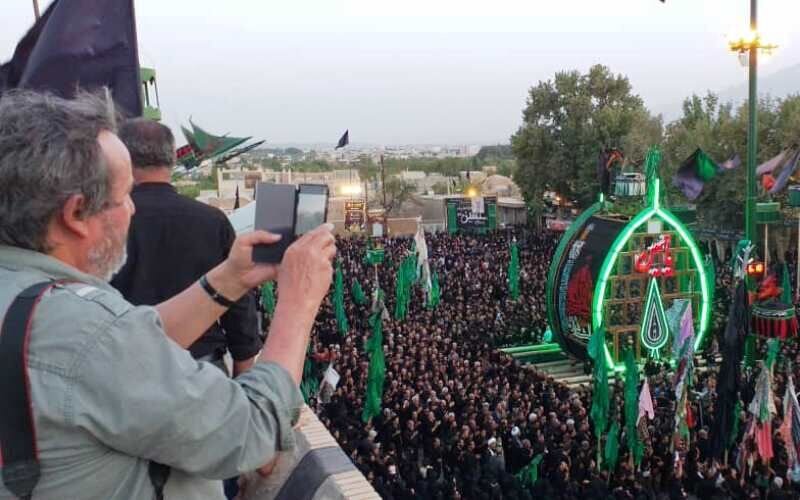482 foreign travelers attend Muharram rituals in Yazd province

TEHRAN - A total of 482 foreign travelers attended Muharram's mourning rituals in their visits to Yazd province during the first ten days of the lunar month, which ended on the day of Ashura (July 16).
They participated in religious sessions and rituals commemorating the martyrdom of Imam Hussain (AS), the grandson of Prophet Muhammad (PBUH), and his loyal companions in the Battle of Karbala in 680 CE.
According to Mehdi Rajaeifard, head of Yazd’s Spiritual and Religious Tourism Committee, the travelers hailed from diverse countries, including Turkey, the UAE, China, Russia, Spain, Germany, Mexico, Poland, Lithuania, and the Philippines.
They paid visits to local ceremonies, gaining insight into the spiritual and historical significance of these rituals.
“These foreign tourists are engaged deeply with the mourning ceremonies, visiting religious sites and experiencing significant events like the Ashura noon prayer, Nakhl Gardani (palm-carrying), and Ta’zieh (passion plays),” said Rajaeifard. He noted that the visitors also explored various parts of Yazd province, including Ardakan, Taft, and Mehriz.
The initiative to attract foreign visitors during Muharram began in 2016 with the establishment of the Spiritual and Religious Tourism Committee. This committee, comprising experienced tour guides, skilled clergymen, custodians of religious sites, aims to counteract negative perceptions about Iran and Islam.
 Muharram, the first month of the Islamic calendar, marks the Islamic New Year on its 1st day. The color black, symbolizing mourning, dominates the visual landscape during Muharram. People wear black clothing, and banners, billboards, city decorations, and even writings on car rearview windows display black as a mark of respect.
Muharram, the first month of the Islamic calendar, marks the Islamic New Year on its 1st day. The color black, symbolizing mourning, dominates the visual landscape during Muharram. People wear black clothing, and banners, billboards, city decorations, and even writings on car rearview windows display black as a mark of respect.
Derived from the word “Haram,” meaning forbidden, Muharram is one of the four sacred months during which war is prohibited.
Ashura is a solemn day of mourning in Iran, marked by various rituals where participants wear black, parade through the streets, and chant in unison. Some even engage in self-flagellation to show respect for the tragic event. People refrain from actions and words that may violate the solemn spirit of Muharram, especially on Tasu’a and Ashura. Media channels adjust their schedules to broadcast more religious sermons, mourning songs, live ceremonies, and films that reflect the month’s significance.
The night of Ashura in Iran, known as Shaam-e Ghariban, or “the night of strangers,” is dedicated to those far from home and help. Candles are lit in holy places and gatherings across the country to honor this somber night.
The tragedy of Muharram and the martyrdom of Imam Hussain (AS) are also commemorated in other countries with significant Shia populations, including Iraq, Afghanistan, Azerbaijan, Bahrain, Lebanon, Pakistan, Saudi Arabia, and Syria.
AM
